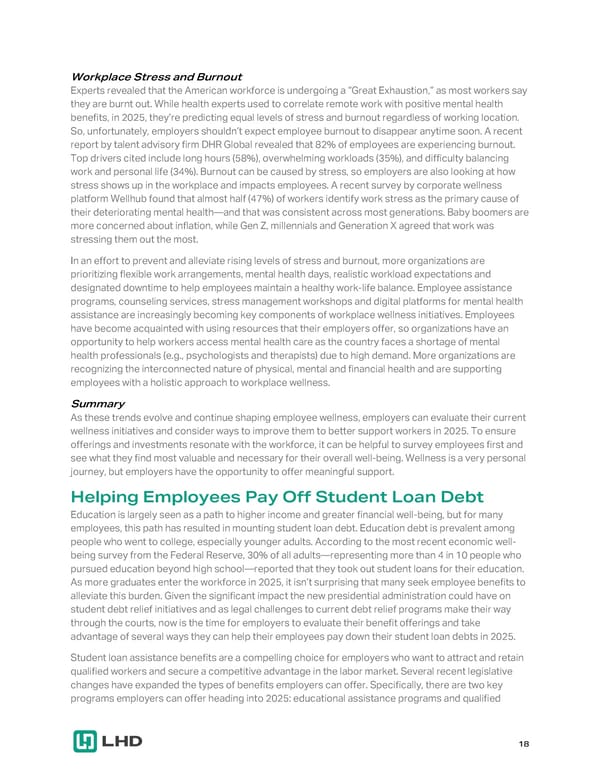Workplace Stress and Burnout Experts revealed that the American workforce is undergoing a “Great Exhaustion,” as most workers say they are burnt out. While health experts used to correlate remote work with positive mental health benefits, in 2025, they’re predicting equal levels of stress and burnout regardless of working location. So, unfortunately, employers shouldn’t expect employee burnout to disappear anytime soon. A recent report by talent advisory firm DHR Global revealed that 82% of employees are experiencing burnout. Top drivers cited include long hours (58%), overwhelming workloads (35%), and difficulty balancing work and personal life (34%). Burnout can be caused by stress, so employers are also looking at how stress shows up in the workplace and impacts employees. A recent survey by corporate wellness platform Wellhub found that almost half (47%) of workers identify work stress as the primary cause of their deteriorating mental health—and that was consistent across most generations. Baby boomers are more concerned about inflation, while Gen Z, millennials and Generation X agreed that work was stressing them out the most. In an effort to prevent and alleviate rising levels of stress and burnout, more organizations are prioritizing flexible work arrangements, mental health days, realistic workload expectations and designated downtime to help employees maintain a healthy work-life balance. Employee assistance programs, counseling services, stress management workshops and digital platforms for mental health assistance are increasingly becoming key components of workplace wellness initiatives. Employees have become acquainted with using resources that their employers offer, so organizations have an opportunity to help workers access mental health care as the country faces a shortage of mental health professionals (e.g., psychologists and therapists) due to high demand. More organizations are recognizing the interconnected nature of physical, mental and financial health and are supporting employees with a holistic approach to workplace wellness. Summary As these trends evolve and continue shaping employee wellness, employers can evaluate their current wellness initiatives and consider ways to improve them to better support workers in 2025. To ensure offerings and investments resonate with the workforce, it can be helpful to survey employees first and see what they find most valuable and necessary for their overall well-being. Wellness is a very personal journey, but employers have the opportunity to offer meaningful support. Helping Employees Pay Off Student Loan Debt Education is largely seen as a path to higher income and greater financial well-being, but for many employees, this path has resulted in mounting student loan debt. Education debt is prevalent among people who went to college, especially younger adults. According to the most recent economic well- being survey from the Federal Reserve, 30% of all adults—representing more than 4 in 10 people who pursued education beyond high school—reported that they took out student loans for their education. As more graduates enter the workforce in 2025, it isn’t surprising that many seek employee benefits to alleviate this burden. Given the significant impact the new presidential administration could have on student debt relief initiatives and as legal challenges to current debt relief programs make their way through the courts, now is the time for employers to evaluate their benefit offerings and take advantage of several ways they can help their employees pay down their student loan debts in 2025. Student loan assistance benefits are a compelling choice for employers who want to attract and retain qualified workers and secure a competitive advantage in the labor market. Several recent legislative changes have expanded the types of benefits employers can offer. Specifically, there are two key programs employers can offer heading into 2025: educational assistance programs and qualified 18
 2025 Employee Benefits Market Outlook Page 17 Page 19
2025 Employee Benefits Market Outlook Page 17 Page 19